The 6 Best Cities in Spain to Learn Spanish
Do you want a fully immersive language-learning experience?
The idea of going abroad to learn a language is both exciting and daunting. However, the easy-going lifestyle and sunny weather in southern European cities make learning Spanish a fascinating and enjoyable experience.
Before you embark on the epic adventure of learning Spanish in Spain, let us provide you with a bit more information.
In recent years, the number of language schools has greatly increased, and going abroad has become logistically easier. Many people now choose to study in another country for a short time during their holidays.
Learning Spanish in Spain has only advantages: a wide choice of courses, a lively student atmosphere, and good weather all year round.
What’s more, Spain has some beautiful natural places as well as many fascinating, charming cities, each with its history, culture and quirks.
We’re going to show you some great destinations to go to if you’re thinking of studying Spanish abroad.
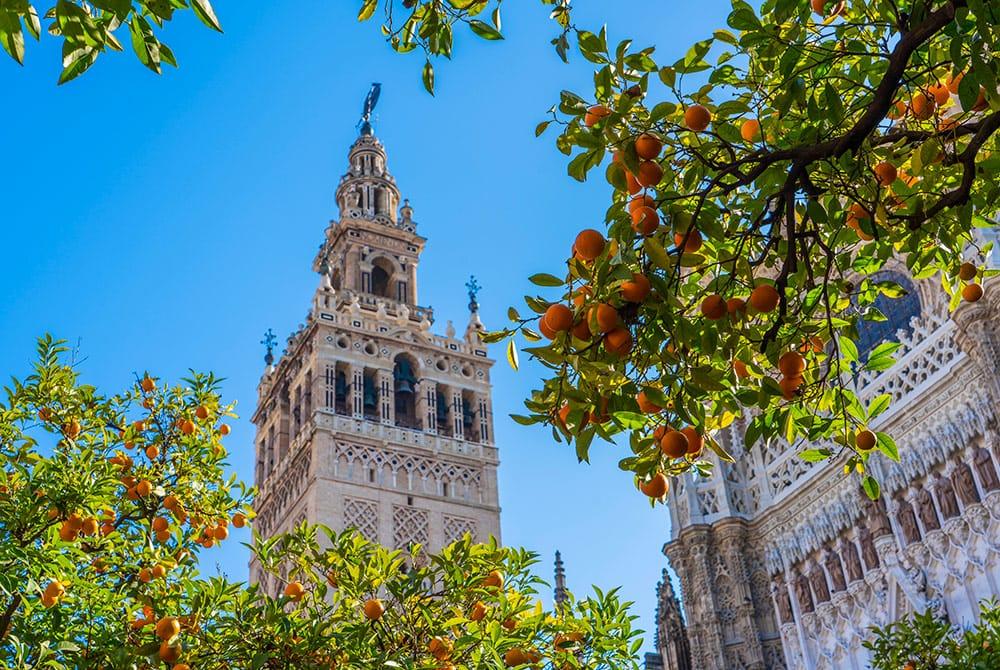
Learn Spanish in Seville
Seville is famous around the world for its warm reception of visitors, its unique lifestyle, its prestigious past, its identity as a melting pot of Mediterranean cultures, its beautiful pieces of architecture, its warm and temperate climate, its unbeatable cuisine…and much more.
Seville is the capital of Andalucía. With a population of 700,000, it’s the fourth most populated city in Spain (behind Madrid, Barcelona, and Valencia).
It’s also the third most visited city in Spain after Barcelona and Madrid. Here, you’ll enjoy 300 days of sun per year!
The Andalusian capital is well connected to the rest of Andalucía, the Iberian Peninsular, and Europe by motorway, air travel, and railway.
The international airport receives more than four million passengers each year, with a large proportion of them arriving from European capitals such as Paris, London, Rome, Amsterdam, Brussels, etc.
Sevilla boasts several architectural gems, such as the Giralda, Cathedral, Alcázar, Casa de Pilatos, Plaza de España, and the Torre del Oro.
The city also hosts various flamenco, film and theatre festivals and is, above all else, a city of celebrations. Here, you can enjoy the Feria de Abril and the lively religious parades that take place during Easter Holy Week (la Semana Santa).
Typical Sevillian gastronomy is highly influenced by Mediterranean cuisine. In other words, many dishes contain a fish base, olive oil and an abundance of fruit and vegetables.
Regional produce from neighbouring provinces is incorporated into Sevillian cuisine: dried sausage, serrano ham, and bull tail are just a few examples. These peculiar yet tasty foods are a special treat for your senses.
Bars are an essential part of social life in Seville. Seville is famous for ‘el tapeo’ (sharing delicious traditional Sevillian tapas dishes with friends, family, and colleagues over a drink).
Spanish in Seville is spoken with a strong Andalusian accent, which you will inevitably pick up when you learn Spanish here!
The sunny climate produces blue skies, light breezes, and pleasant temperatures all year round. As soon as you step into the street in the morning, the sun fills you with energy and happiness.
In April, the orange trees that line the streets blossom and fill the air with a lovely smell.
During the summer season, from July to September, it’s very hot in Seville, so we don’t recommend this period to people sensitive to the heat.

Learn Spanish in Madrid
Madrid is one of the most populated and cosmopolitan places in Europe.
This lively city is home to one of the world’s best universities, making it a popular study destination for students.
Many international students choose to study in Madrid.
Madrid had many popular student neighbourhoods, such as El Barrio de Chamberí in the city centre; the Lavapiés neighbourhood, renowned for its diverse culture; the Asturias neighbourhood, ideal for those who want to live in the historic heart of the city; and the Tetuán neighbourhood, where tradition meets modernity and business.
Madrid is an incredibly beautiful city; strolling through the city is always an enjoyable activity.
You’ll never get tired of admiring the architecture of the buildings, squares, parks, and gardens.
The Main Square, Royal Place, Temple of Debod, Almudena Cathedral, San Miguel market, la Puerta del Sol, Retiro Park…
The city is full of treasures that you’ll want to revisit again and again.
Madrid is famous for its museums, which are home to some of the world’s most famous art pieces. Don’t miss out on visiting the Prado Museum, theReina Sofía Museum, and the Thyssen-Bornemisza National Museum.
Other cultural activities include the theatre, opera, dance, concerts, and festivals. Football fans are well catered for thanks to Real Madrid and Atlético.
There’s something for all tastes and budgets! Even as an international student, you can access almost everything for a reduced price.
You’ll enjoy sunny weather for most of the year, making it easy to appreciate everything the city has to offer during your stay.
The city is also well known for being a commercial and business hub. There are some amazing study and work opportunities available in prestigious and reputable industries.
The price of language tuition is high compared with other Spanish cities, but there are many excellent language schools.
Finding a good Spanish course is relatively easy. Besides, the Spanish spoken in Madrid is a more standard dialect. That’s to say, people speak with a more “traditional Spanish” accent.
There are direct flights to Madrid available from many countries, which is especially handy for students only staying a short time.
Being the capital of Spain, Madrid’s transport network with other cities is well developed and of high quality.
Like other Spanish cities, Madrid offers fast transportation, convenient for the millions of tourists it receives each year.
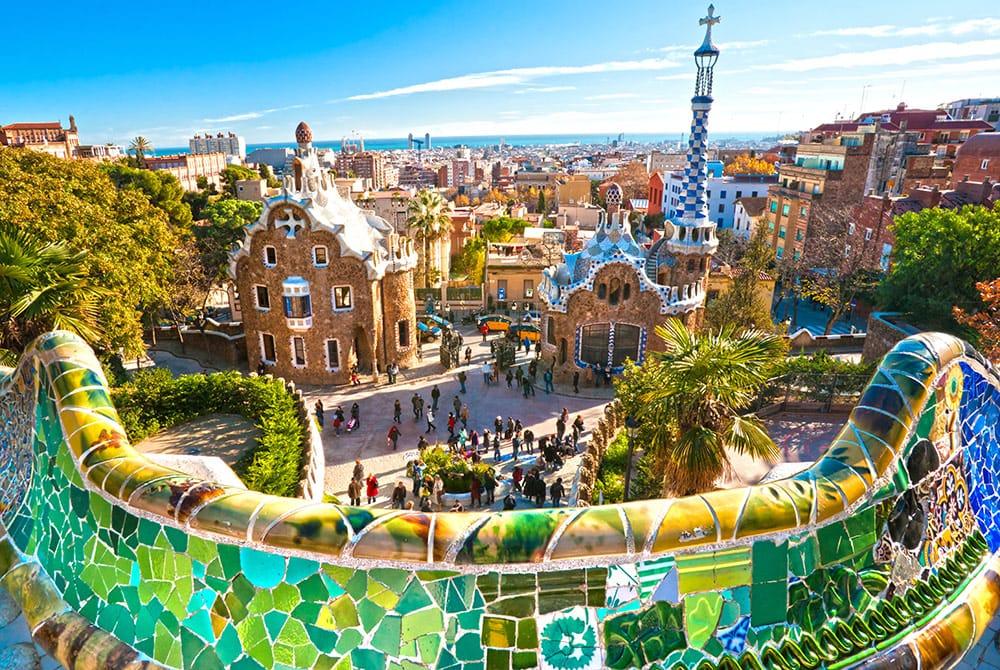
Learn Spanish in Barcelona
Barcelona is a popular destination for students.
There’s a lot for students to enjoy: the sun, the beach, the international atmosphere, and the never-ending celebrations.
Barcelona has good weather, so it’s the ideal destination if you don’t like the cold.
The city enjoys a fairly mild Mediterranean climate, and you’ll see that for most of the year, bar and restaurant terraces are always full.
And who hasn’t dreamt of going to the beach in mid-October?
This is possible in Barcelona, as temperatures around this time are still mild (23 ° C / 73 ° F).
Small advantage: you’ll save a lot of money on things like heating and winter clothing!
Barcelona is also a great place to visit. As a student, you’ll have a lot of free time to discover the city and have fun being a tourist.
You can visit the Parc Güell, la Sagrada Familia, Montjuic, and museums in the city.
You can also leave the city and visit Cataluña to spend a weekend in Sitges or Girona.
And what about the nightlife? Barcelona is a huge party city!
It has the most bars per person in Spain, as well as many nightclubs – good news for partygoers!
Come and discover the nightclubs in Puerto Olímpico that are very popular with tourists and Erasmus students.
As an idea, why not start with a free dinner at Pacha and finish the night at Opium Barcelona? If you fancy a more authentic Latin atmosphere, we recommend the Mojito club or Oak Barcelona.
There are many direct flights to Barcelona from all over Europe. Like Madrid, it’s an easy place to get to. The official languages are Spanish and Catalan.
It’s easy to find high-quality Spanish courses, as the universities and language schools are popular with international students from all over the world.
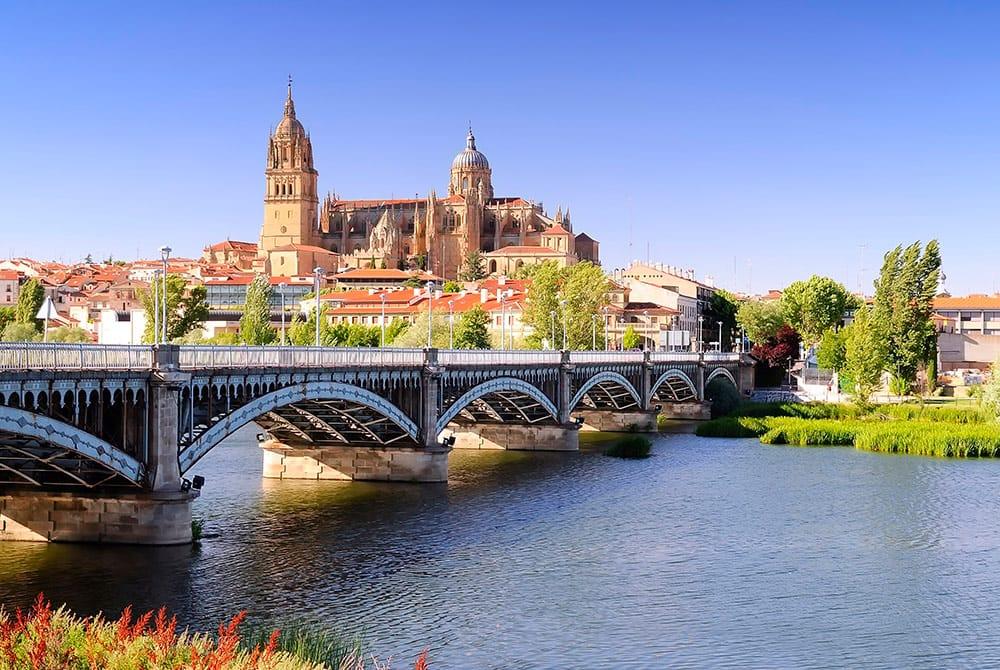
Learn Spanish in Salamanca
Salamanca is a small city with 170,000 residents. It’s located in the northeast of Spain, 200km from Madrid.
Salamanca was chosen as the European Capital of Culture in 2002 and is classified as a World Heritage City because of its architectural and artistic wealth. It’s famous around the world for being home to one of the oldest universities in Europe.
The beauty of both the city and its surroundings, along with the university atmosphere, attract many international students every year. It’s a fascinating place to learn Spanish and about Spanish culture.
This prestigious city offers concerts, theatre productions, and film festivals for visitors to enjoy.
There are many museums and exhibitions where you can learn about Spanish culture and art from the Middle Ages up to the 20th century. The Cathedral Museum and the Salamanca Art Centre are two examples.
Salamanca’s streets, however, are the city’s best treasures. Narrow yet accessible, visitors can stroll down them and admire architectural gems at every turn.
The splendour of the Spanish Renaissance has been excellently preserved in Salamanca. Unique examples of the Baroque period, such as the Plaza Mayor, are some of the most beautiful in the world.
An integral part of Salamanca’s identity is the joyful buzz of student life that spreads around the whole city.
Thousands of students from all around the world walk down Salamanca’s streets every day, filling its bars, cafes, cinemas, theatres, museums, and libraries.
Salamanca is in a great location, not only because of its proximity to Madrid, but also because you can travel to many other cities and interesting places quickly: Toledo, Segovia, Ávila, Galicia, the Cantabrian coast, Portugal, etc.
Within the beautiful rural Castilian landscape, you’ll find various leisure activities to do: horse riding, hiking, food tours, visits to small towns…
Salamanca satisfies every student’s needs and interests, whatever they may be.
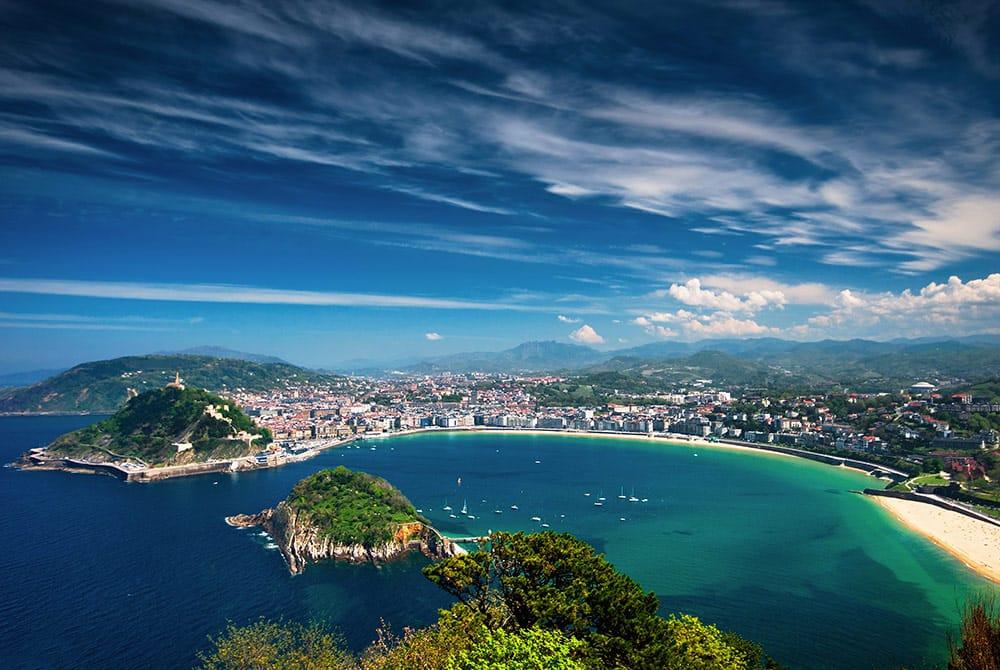
Learn Spanish in San Sebastián
The magnificent, chic city of San Sebastián never ceases to amaze visitors.
San Sebastián is an elegant city. Houses and cafés line its vast stretches of beaches, and at sunset, the small historic centre is basked in spectacular golden light.
Enjoy an afternoon spent exploring the shops, cafes and pintxos (Basque tapas) bars that line the wide streets of the city. Then end the day with a walk along the beach, where you can admire the most Instagram-worthy sunsets.
The city’s beauty is truly remarkable.
San Sebastián is both a great city break and beach destination. Whether you want to relax, sightsee or have fun, it exceeds all expectations.
You’ll want to stay in San Sebastián forever!
The metropolitan area has three main zones. The famous La Concha bay, shaped like a shell as its name suggests, is surrounded by shopping streets and pintxos bars. The small historic centre is full of bars and restaurants, and Zurriola Beach is the liveliest beach in San Sebastián and a favourite destination among surfers.
Culinary experts around the globe consider San Sebastián to be the gastronomic capital of Europe.
With more Michelin-starred restaurants per square metre than any other city in the world, you can eat like royalty in San Sebastián. Even students on a tight budget can eat well at the city’s many restaurants and pintxo bars, where the fish and meat are of top quality.
Unfortunately, you won’t have enough time to try every restaurant’s speciality!
You’ll leave San Sebastián speaking excellent Spanish and with enough experience to become a food expert!
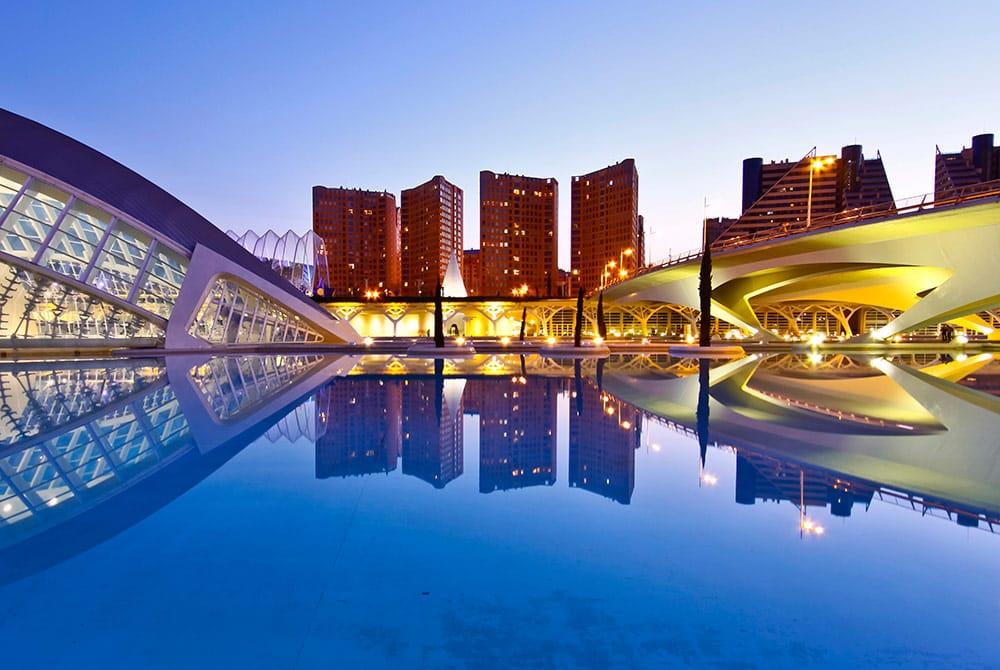
Learn Spanish in Valencia
Valencia is the third-largest city in Spain, and it receives millions of visitors every year.
Located on the Mediterranean coast, it’s home to paella, the most famous traditional Spanish dish in the world.
Its ingredients are saffron, green beans, rice, chicken, water, salt, olive oil, butter beans, rabbit, paprika, rosemary, snails, garlic, duck, artichoke, white beans, and pork ribs.
Just like Barcelona, Valencia enjoys a Mediterranean climate, meaning the weather is mild all year round.
Valencia has a delightful mix of old and modern architecture. You’ll find theatres, music, museums, shops, and much more.
It’s famous for both its monuments and food, as well as its City of Arts and Sciences.
In addition to being well known for the quality of its oranges, Valencia has its famous Fallas Festival, which takes place in March.
Spectacular parties last for three days to celebrate the burning of Ninots (giant dolls).
The Ninots (dolls) are gigantic creations that decorate the city’s squares. They’re made from cardboard and are inspired by current socio-political topics. They’re burned at night, filling the city with magic and excitement.
In regard to gastronomy, it’s impossible to visit Valencia without trying one of its world-famous specialities: paella. This dish has a rice base and contains fish and meat. Its delicious flavour is unforgettable.
Valencia has a mild climate, with no more than 20 days of rain per year.
Its landscape is also remarkable; the city is located on a plain, which allows for easy travel by metro, bus, on foot, or by bicycle.
Valencia is a busy city with good nightlife; neighbourhoods such as El Carmen or Ruzafa offer a large number of interesting and unique places. Last but not least, the city has 6km of beach to enjoy in summer.
Thanks to Valencia’s coastline, you can swim in the transparent waters of the Mediterranean Sea and stroll along the soft sand.
The sea air keeps Valencia’s climate one of the most pleasant in Europe.
The average annual temperature is 17 ° C (63 ° F). Summers are hot and winter temperatures rarely drop below 10 ° C (50 ° F).
Since the Spanish language originated in Spain, studying the language in its home country is an excellent idea.
You’ll discover the language in an authentic context. You’ll be able to speak with Spaniards in an immersive environment, and you’ll get to practise Spanish daily.
You’ll soon find that you’re improving rapidly!
For these reasons, learning Spanish in Spain is a fantastic opportunity.
Don’t put it off any longer. The amazing adventure of learning Spanish in Spain awaits!

